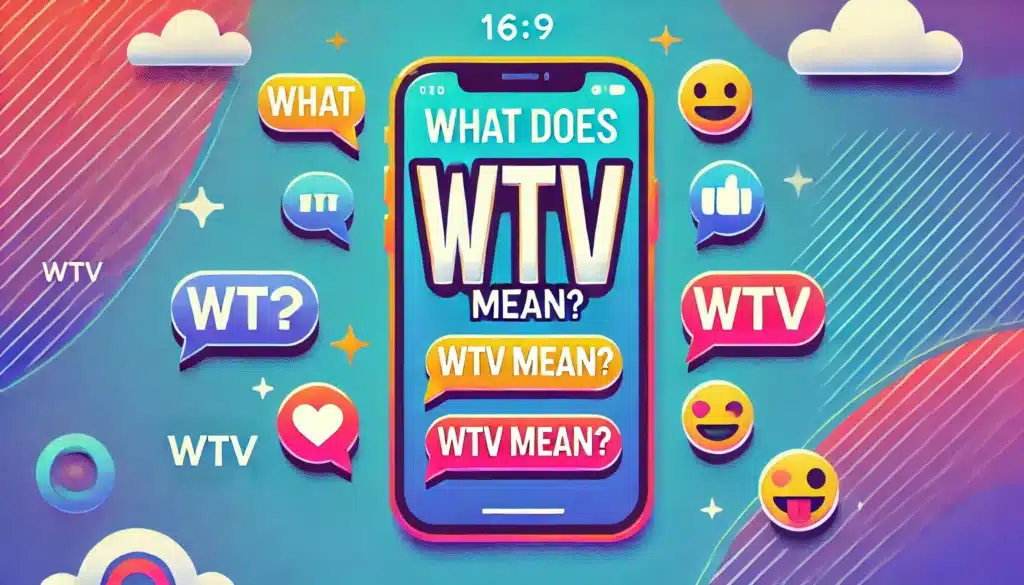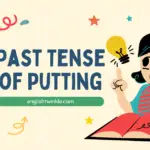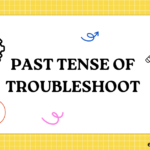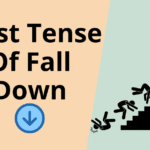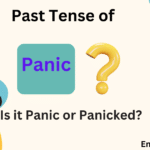In today’s world of text-based communications and online speech, keeping up with acronyms like “WTV” can make a world of difference in understanding casual conversations. Many internet phrases and slang terms help convey emotions, thoughts, and reactions faster, especially in informal and text messaging exchanges. Abbreviations like WTV have become commonplace across social media platforms like Facebook, Instagram, and Snapchat. This article will explain what “WTV” means in texting, when to use it, and how it captures a nonchalant attitude in online chats.
A recent trend in digital communication has shown that acronyms aren’t just shortcuts; they carry a specific tone and context. WTV, that tone often implies indifference or a informal attitude that works well in certain casual contexts but may not be suitable for more formal conversations. Knowing how and when to use WTV properly can help you keep pace with modern texting trends while avoiding misunderstandings in online dialogues.
The Meaning of “WTV” in Texting
The term “WTV” stands for “whatever” in its abbreviated form. Though small in character, it’s powerful in impact. Generally, it signals a sense of indifference or agreement to continue a conversation without focusing too much on specifics. “WTV” has a strong casual attitude and is most often employed in relaxed settings, allowing the sender to express a nonchalant or sometimes even dismissive tone.
When you encounter “WTV” in a text or on social media, its meaning aligns with a sense of brushing off the importance of a subject. For example, a person might reply “WTV” when they agree to something but without much enthusiasm. This usage makes it ideal for those who want to participate in a conversation without getting deeply invested. As acronyms go, “WTV” is among the most informal and conveys a shorthand style that has quickly grown in popularity within online and mobile communication.
Origins of “Whatever” and Its Transition to “WTV”
The internet introduced a wide range of text slang to make online chats quicker and easier. These abbreviations help reduce the time it takes to respond. Before “WTV,” the word “whatever” was a casual term used to show boredom, indifference, or mild dismissal. The phrase “whatever” became popular in the 90s with relaxed TV shows and movies. It captured a laid-back tone and became a go-to term for casual conversations.
As texting became a fast form of digital communication, people needed even quicker ways to express ideas without typing full words. This was especially important with SMS character limits. “Whatever” soon shortened to “WTV,” taking hold in online messaging and social media platforms. Now, “WTV” is a common expression in informal language, widely used in chat sessions, tweets, and even video comments.
Contextual Use of “WTV” Across Social Media and Texting
Understanding when and where to use “WTV” is essential, especially as text-based communications expand across platforms. It’s often seen in messaging apps or on social media, where responses are expected to be short and direct. On platforms like Snapchat and Instagram, WTV might be used to reply to stories or comments that don’t require an in-depth answer. However, it’s important to recognize that WTV may not be suited for all conversations.
| Platform | Usage Context | Example |
|---|---|---|
| Snapchat | Responding casually to stories or snaps | “WTV, looks fun!” |
| Comments on posts or stories with little commitment | “WTV, just chillin’ here.” | |
| Casual replies in comment threads among friends or groups | “WTV, I’m good with whatever works for you.” | |
| Text Messaging | Used in informal chats among friends or family members | “Do you want to go out or stay in?” – “WTV, fine.” |
In professional settings, such as work emails or formal scenarios, abbreviations like “WTV” may seem overly casual or even rude. Since “WTV” suggests a dismissive tone, it’s best saved for friends, family, or relaxed conversations. Using “WTV” in formal contexts could make you appear uninterested or bored with the topic, leading to misunderstandings.
Real-life Examples of WTV in Conversations
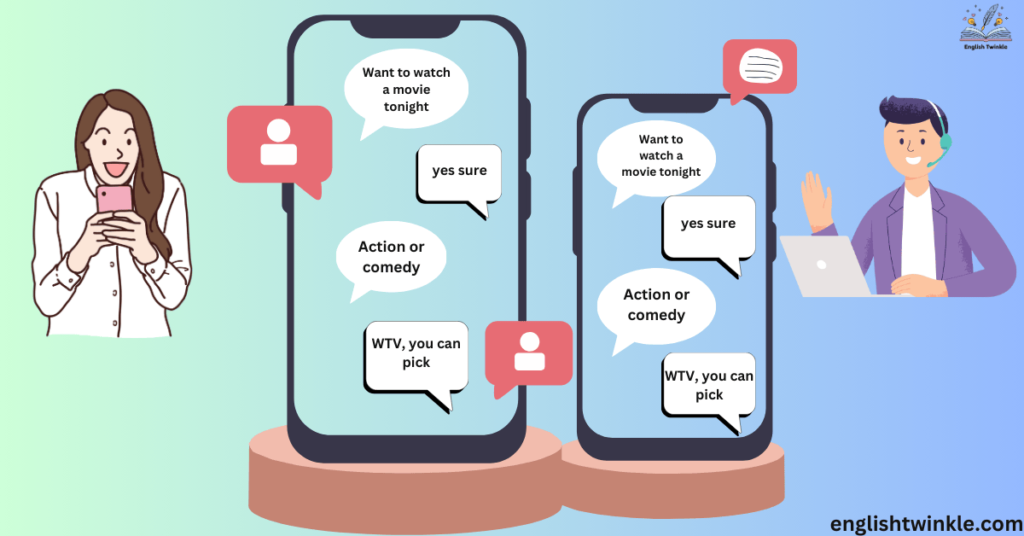
To better understand WTV’s meaning, let’s look at how it might appear in real conversations. These examples can offer insight into the tone and interpretation behind this abbreviation.
Consider a conversation between two friends:
| Conversation Scenario | Example |
|---|---|
| Making a casual choice | Person A: “Pizza or burgers?” Person B: “WTV, either’s fine.” |
| Responding with low enthusiasm | Person A: “Wanna go to the movies?” Person B: “WTV, I’m cool with it.” |
| Indicating disinterest in a topic | Person A: “Did you hear about the new game?” Person B: “WTV, not really into it.” |
In this case, WTV indicates mild disinterest but still implies willingness. The use of WTV adds a layer of informal language that aligns well with casual interactions. It’s short, conveys a sense of “I’m fine with anything,” and keeps the conversation light and easygoing.
How to Respond When Someone Says “WTV”
The response to “WTV” depends on its context and the tone of the conversation. If a friend responds with “WTV” after asking a question, it’s generally safe to continue without pressing further. This is where WTV works well in casual dialogue, allowing the conversation to move on without delving into unnecessary details. In cases where the tone seems dismissive, it might be helpful to clarify or add a lighthearted emoji to bring warmth back into the conversation.
Here are some suitable ways to respond when someone uses WTV in a text:
| WTV Message | Possible Response |
|---|---|
| WTV, up to you! | Great, I’ll pick something fun then! |
| Not sure, WTV. | Alright, I’ll go with my gut. |
| WTV, I’m down with whatever. | Awesome, let’s keep it spontaneous then! |
| WTV, doesn’t matter to me. | Cool, I’m happy to take the lead. |
WTV’s nonchalant attitude doesn’t always mean indifference to the person but more often to the topic, so responding in a way that keeps the conversation moving is usually the best approach.
Alternative Meanings of “WTV” Across Contexts
While WTV commonly represents “whatever,” it can have other meanings, though these are less widespread. In specific contexts or media settings, WTV might be used as an abbreviation for “World Television Day” or even “Web TV” in certain discussions about media and broadcasting. These cases are rare, however, and would generally appear in content centered around media or the news industry, such as in organizations like USA TODAY.
Given these potential alternative meanings, it’s wise to clarify if you’re in an unfamiliar group or context. Misinterpretation is possible if WTV is used outside its common informal definition, so if there’s doubt, it’s always best to ask or look at the surrounding text for clues.
Expert Tips on Using “WTV” Smoothly in Texting
Knowing when to use WTV and when to avoid it is key to fitting in with internet slang trends while keeping the tone friendly. Here are a few tips to use WTV effectively in your online interactions.
Use “WTV” sparingly in professional or semi-formal settings, as it may seem overly relaxed. In formal contexts like emails, work group chats, or professional platforms, complete words convey a more respectful tone. “WTV” could unintentionally signal apathy, which might not be well-received. ICYMI (in case you missed it), informal acronyms are best kept to text messaging and social media, where a casual tone is more acceptable.
Secondly, be mindful of tone, especially if WTV could sound dismissive. Since WTV has a nonchalant and informal tone, it may not fit conversations that require thoughtful responses or a more engaged attitude. When in doubt, it’s better to use a more precise response to prevent misunderstandings.
Summary of What WTV Means in Texting and Social Media
In summary, WTV is a casual abbreviation in texting and social media that shows indifference, boredom, or mild agreement. As an internet phrase, it’s spread widely across social platforms, becoming a popular, informal way to convey a flexible attitude.
While it’s widely accepted among younger users and friends, it’s best avoided in situations where a formal tone is required. If you’re new to using WTV, remember that it’s all about context. WTV shines in digital conversations that call for light responses without deep commitments. The next time someone uses WTV in a text,
you’ll understand its tone, significance, and how to respond in a way that keeps the conversation flowing smoothly.
Sources
- Smith, M. (2022). Guide to Modern Texting Acronyms. USA TODAY Tech, 5.
- Johnson, R. (2023). Understanding Digital Jargon in the Age of Social Media. Online Communication Quarterly, 12(3), 45-67.
- Internet Phrases Encyclopedia. (2022). “Common Acronyms for Everyday Conversations.”
- How Millennials and Gen Z Use Digital Communication – Pew Research Center

Freck John, linguist and English educator, shares grammar insights and writing tips at English Twinkle, making language concepts accessible to all learners.

